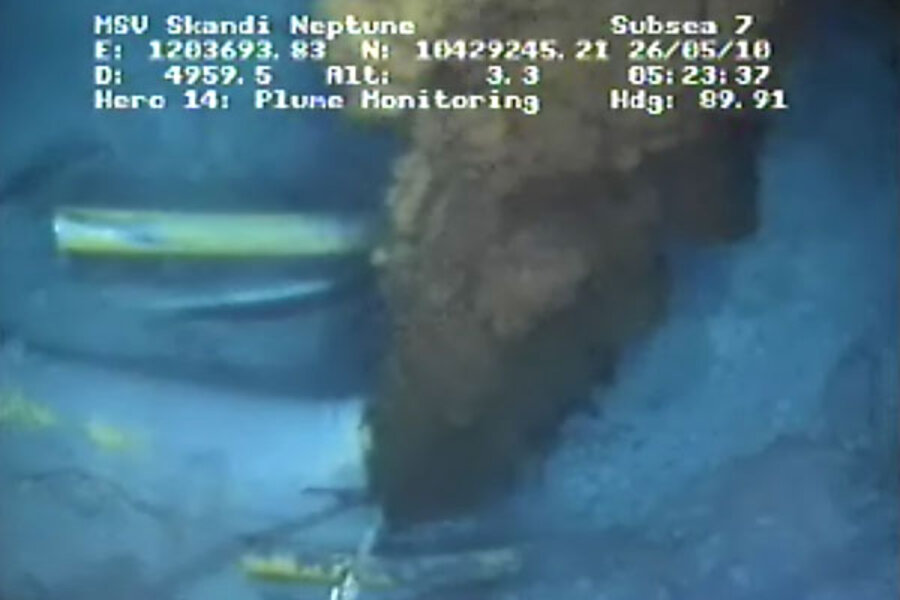Top kill video: How $11 million of oil turned into billion-dollar disaster
Loading...
For days, Americans have tuned in to the ugliest reality TV of the year: oil flowing from the sea floor of the Gulf of Mexico.
This afternoon, the BP top kill video brought home the economic and environmental challenge unfolding off the coast of Louisiana.
The cleanup has already cost more than $760 million. Perhaps a few billions of dollars more will be spent on environmental measures, claims, and lawsuits before BP can end this dreary chapter in its corporate history.
And for what? To put an end to a flow of oil that's so far been worth in the neighborhood of $11.5 million.
That's the roughest of estimates. A panel of experts will come up with a much more refined estimate of the amount of oil that's flowed into the Gulf, perhaps within the next few days.
But double that oil cost estimate. Triple it. It still doesn't begin to cover one-twentieth of the money that BP has already spent on cleanup, much less the long-term damage to the environment and to the company's reputation.
That's one reason safety and backup measures are key for companies involved in large and risky ventures. One slip and the costs can quickly spiral out of control.
BP has had some success capturing an average 2,430 barrels of oil a day from the leak since May 16, using an insertion tool. But it's not enough.
On Wednesday around 1 p.m. central time, it began a process known as "top kill." It started pumping heavy mud to the sea floor with the hope of plugging the leak at its source.
Since the process has never been tried before at nearly a mile underwater, it's hard to know when the company might see results.
"We expect it would be a couple days," says company spokesman David Nicholas. "We are doing this because it's the next best option."


